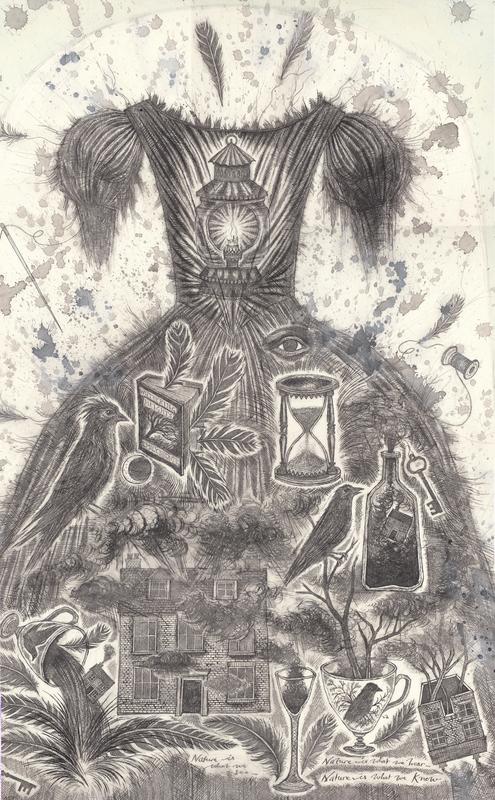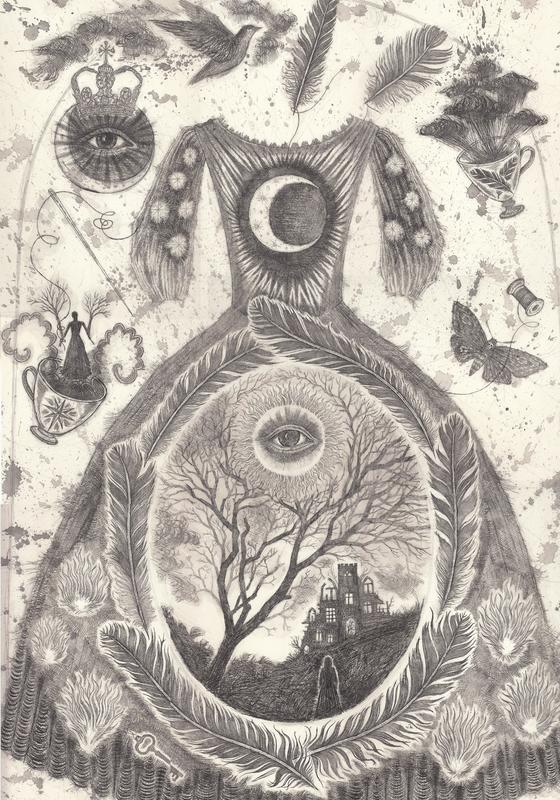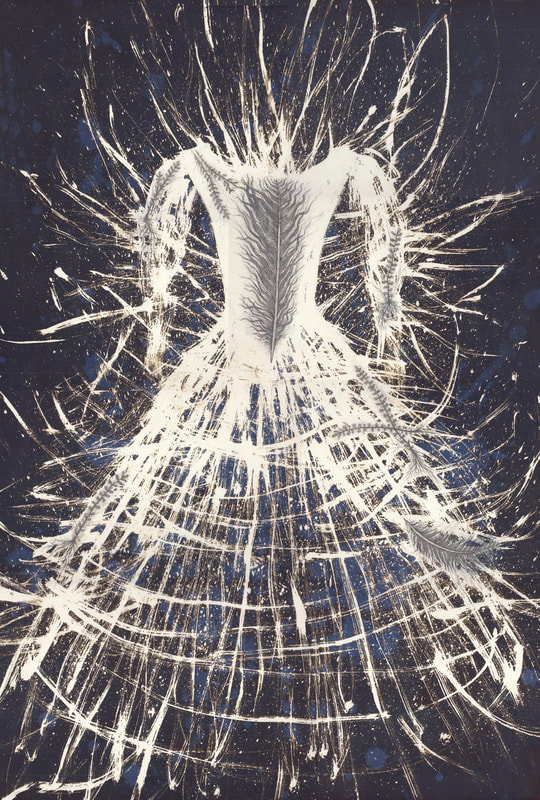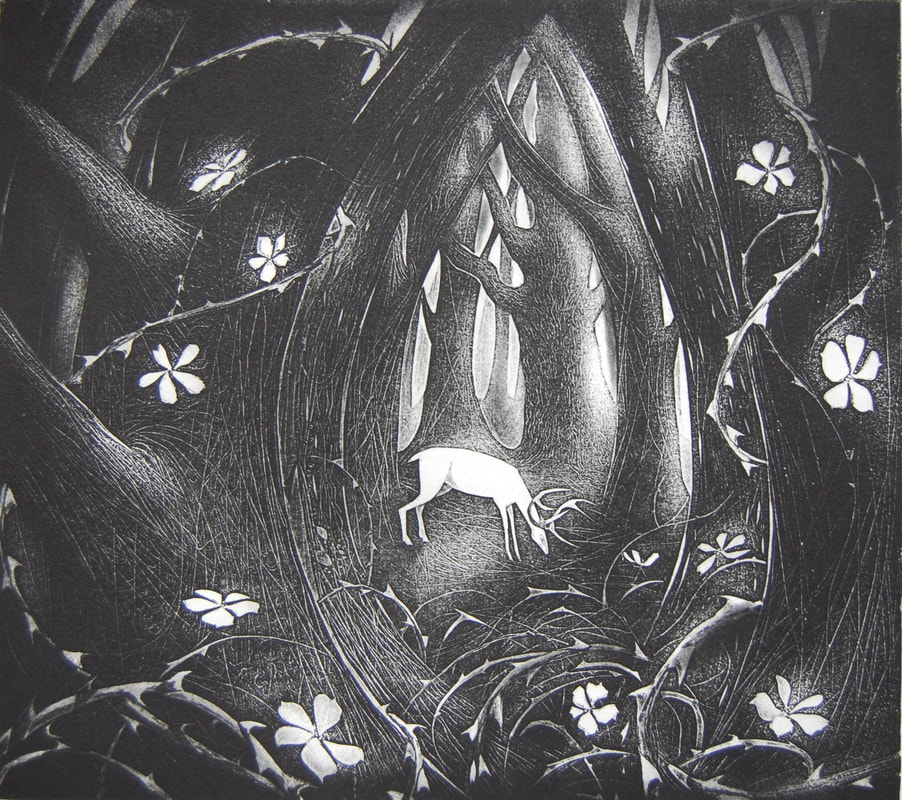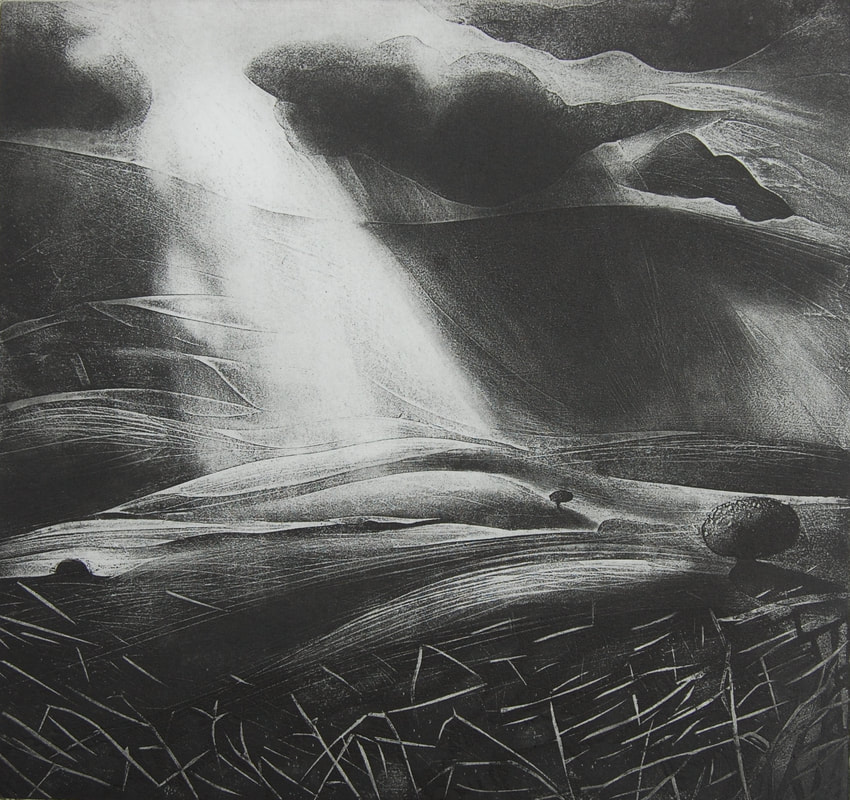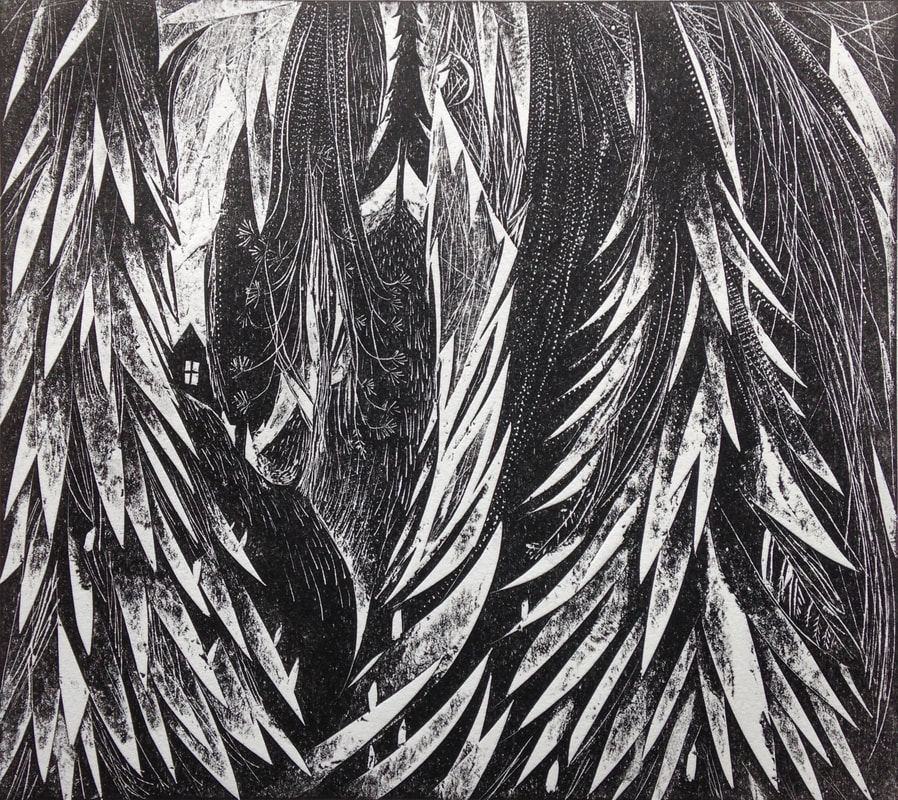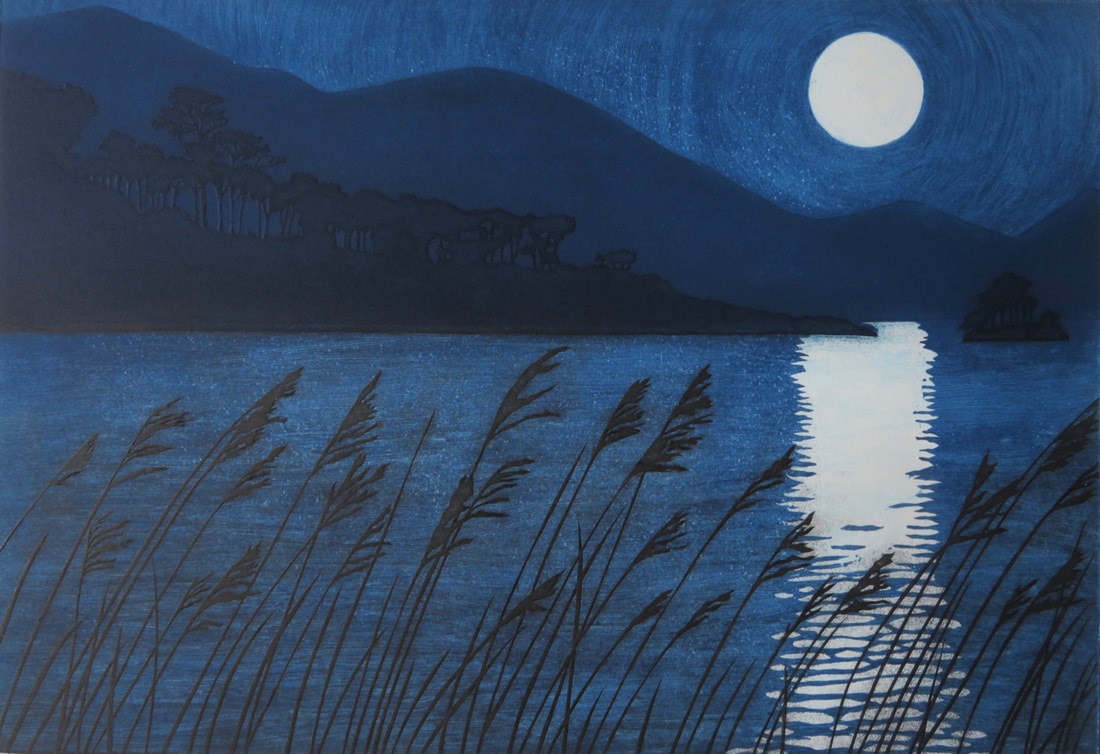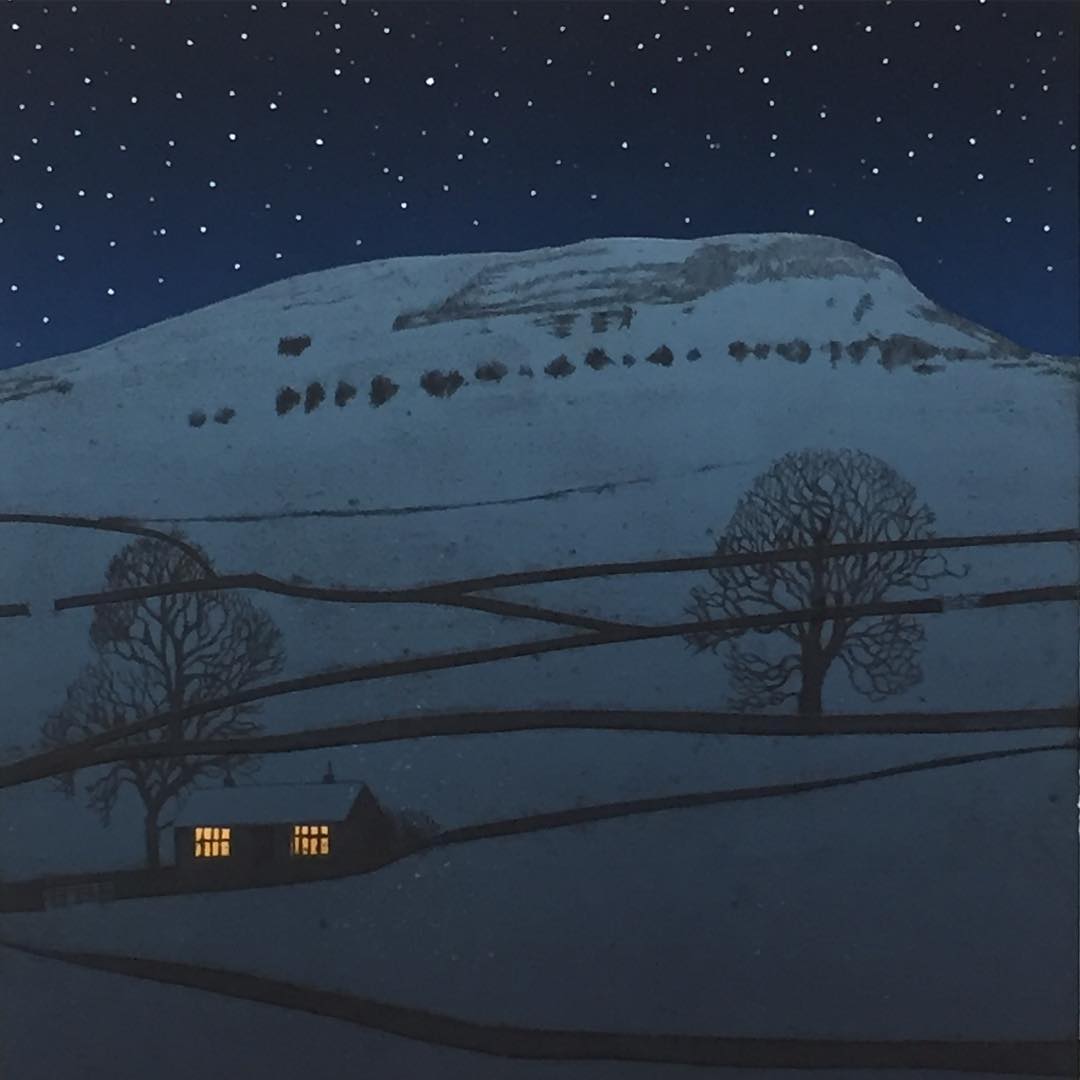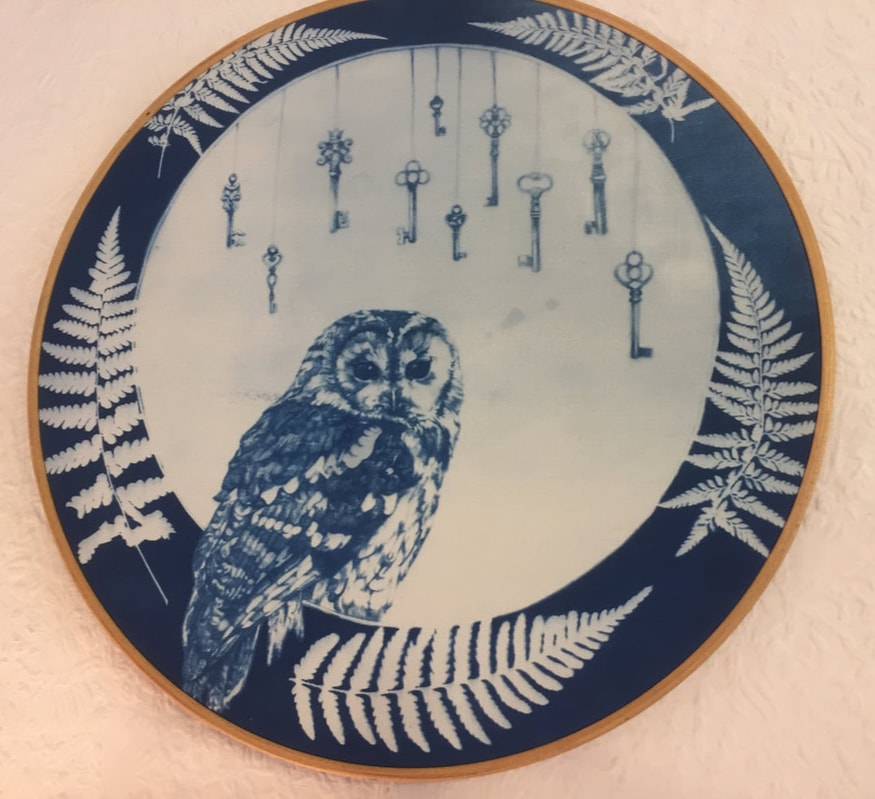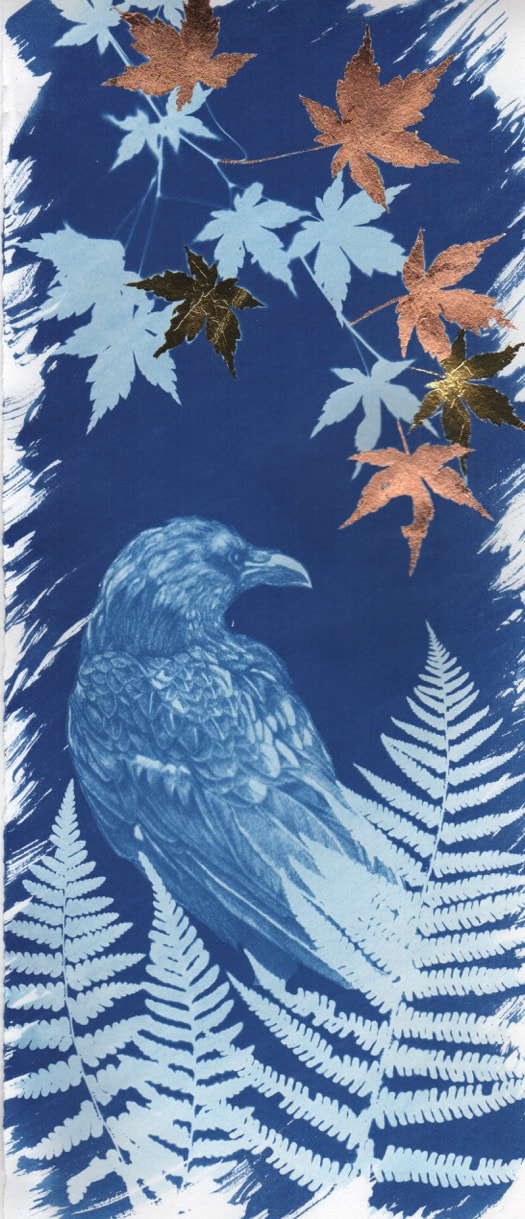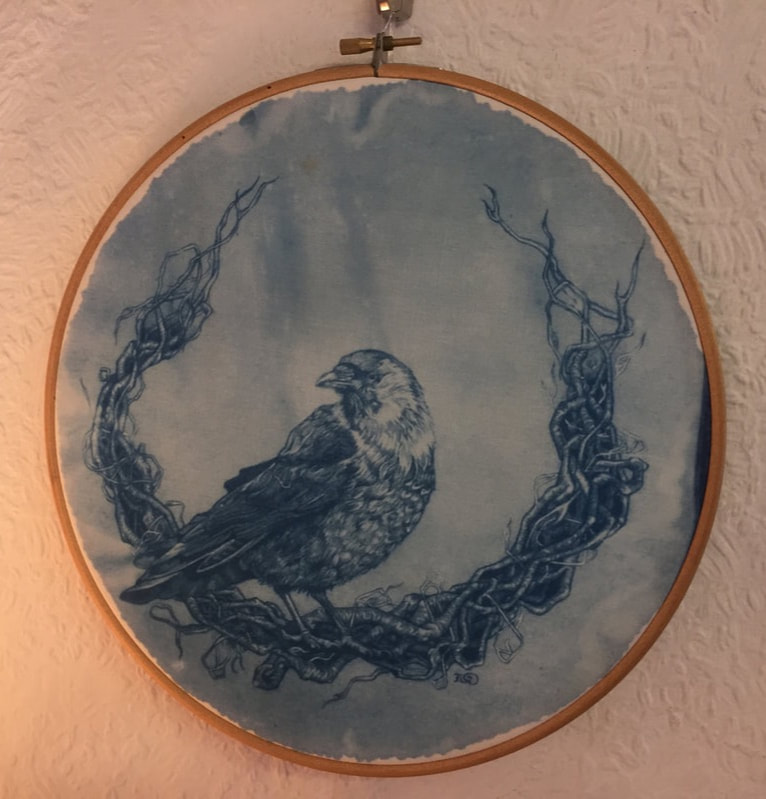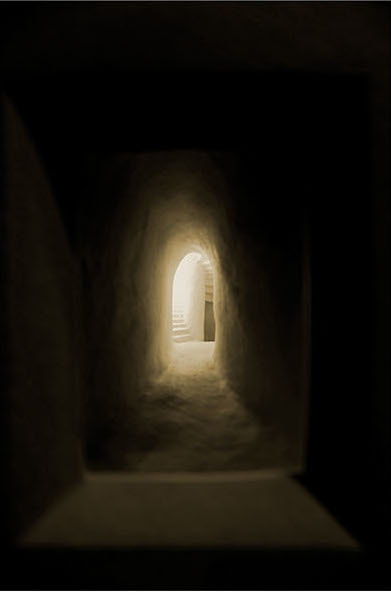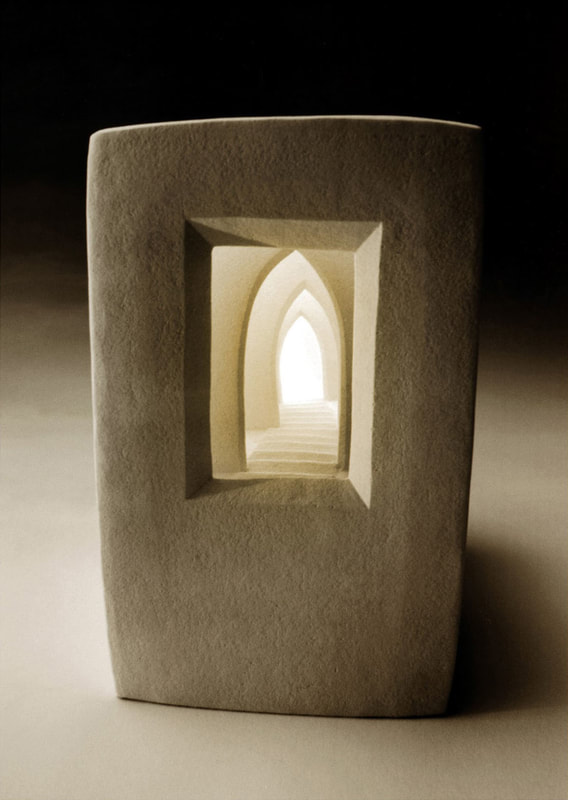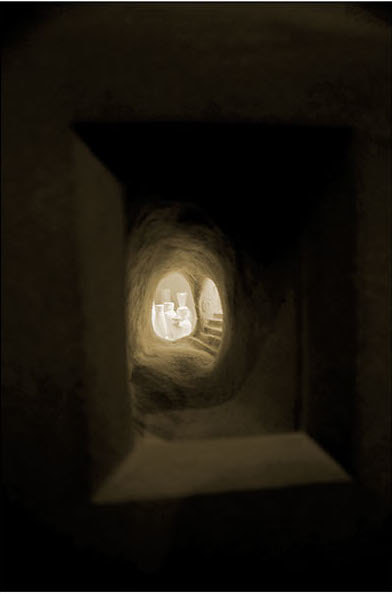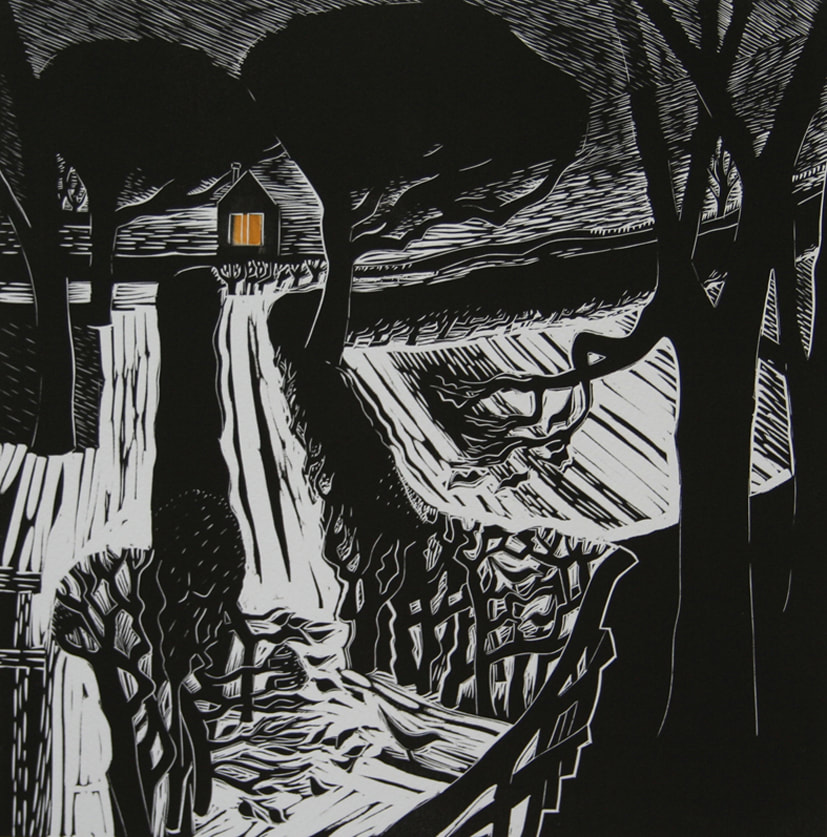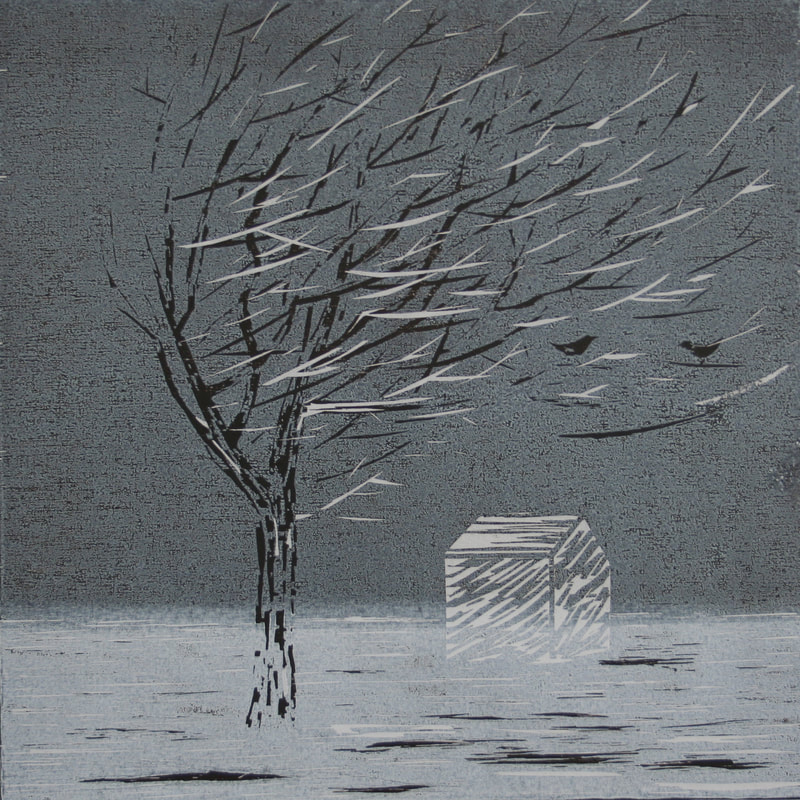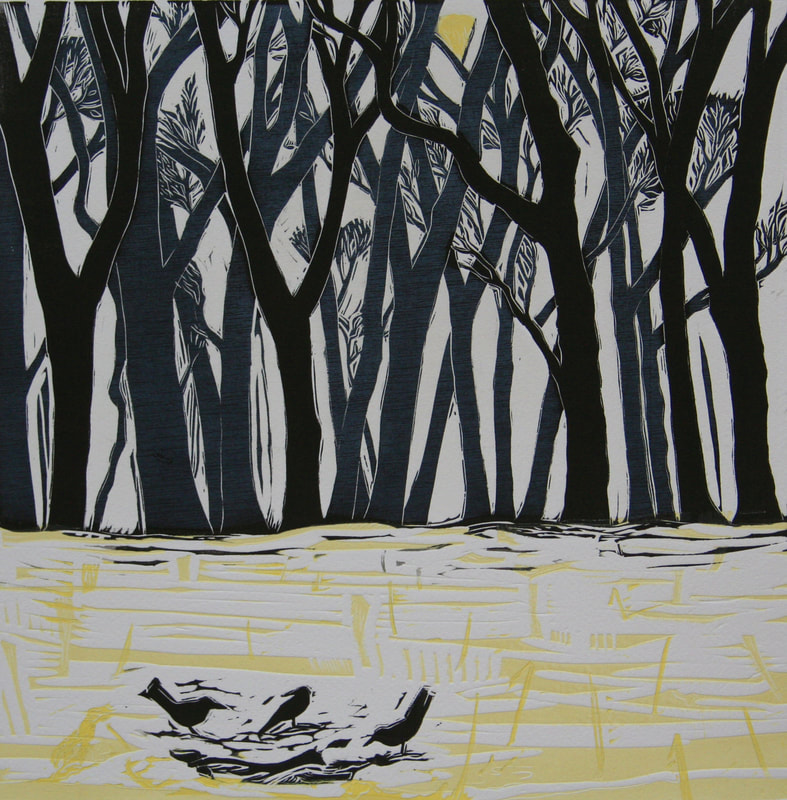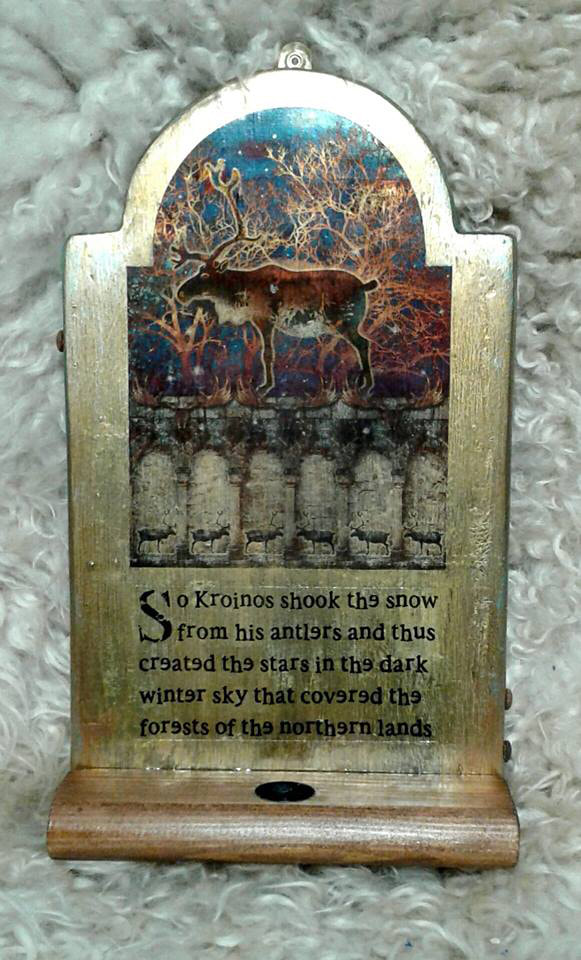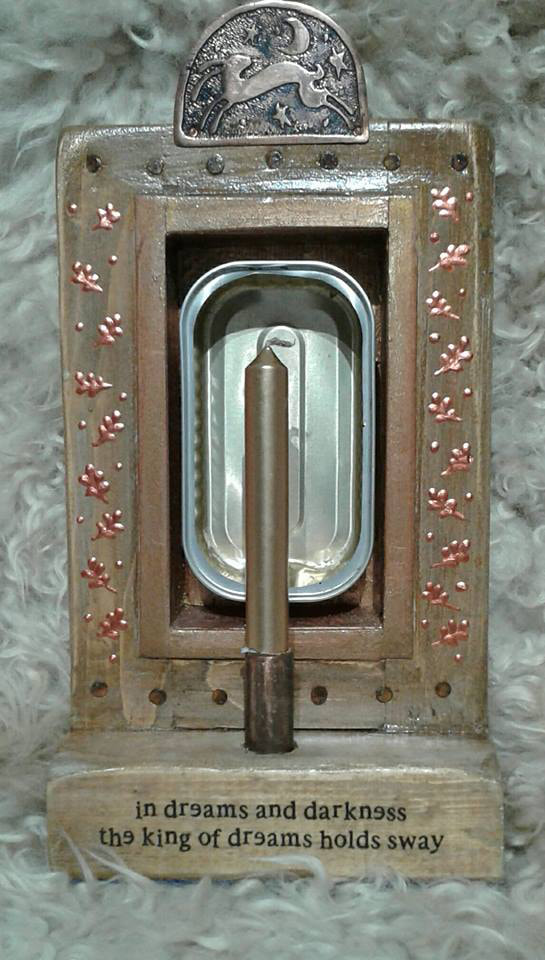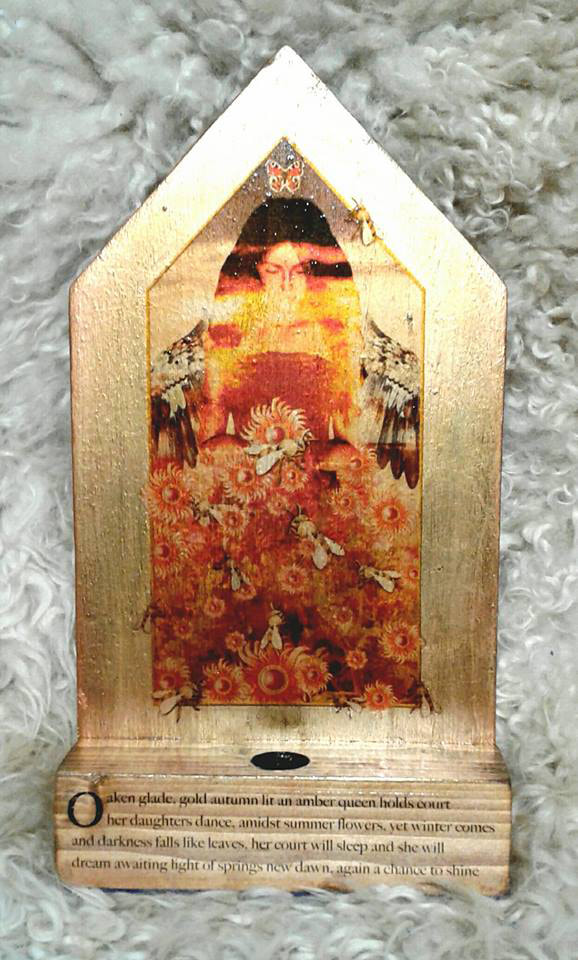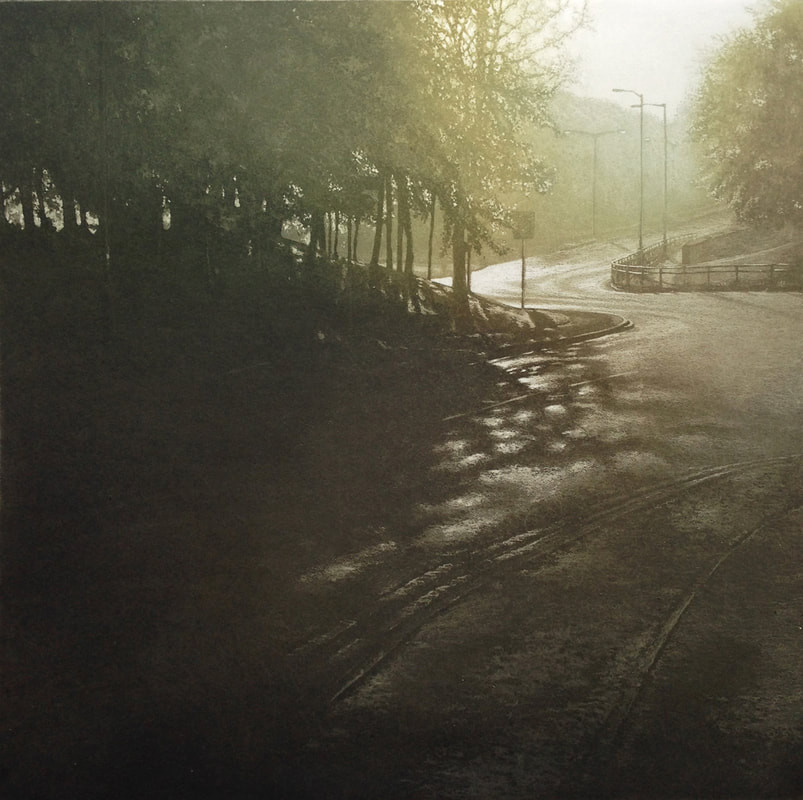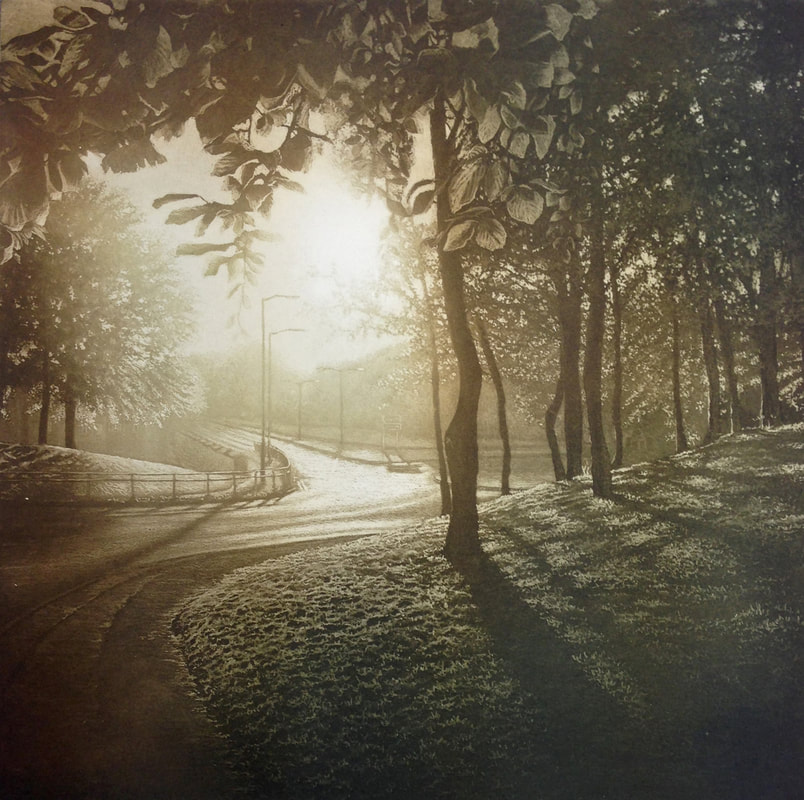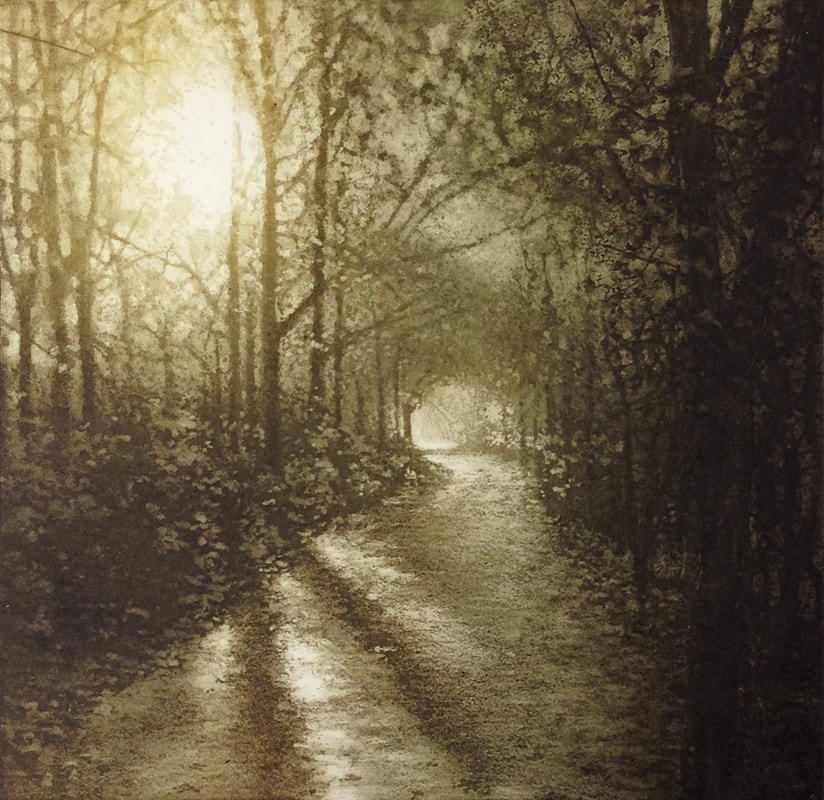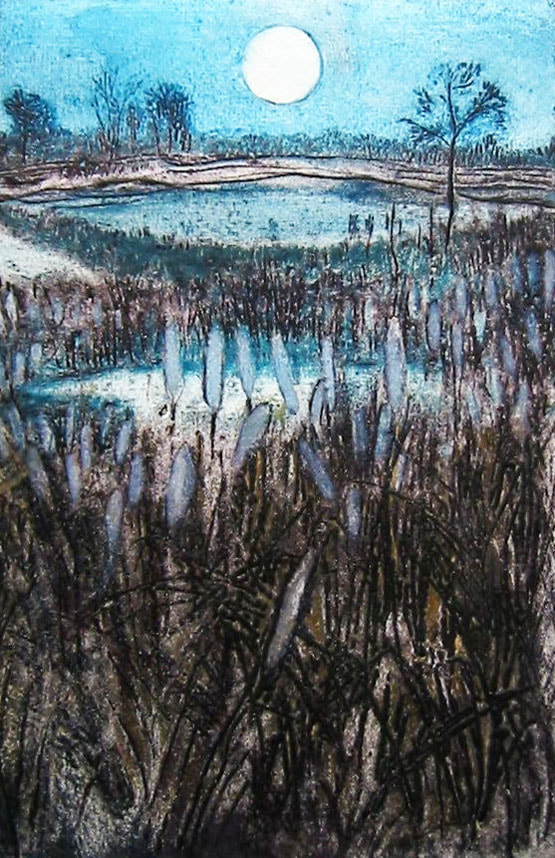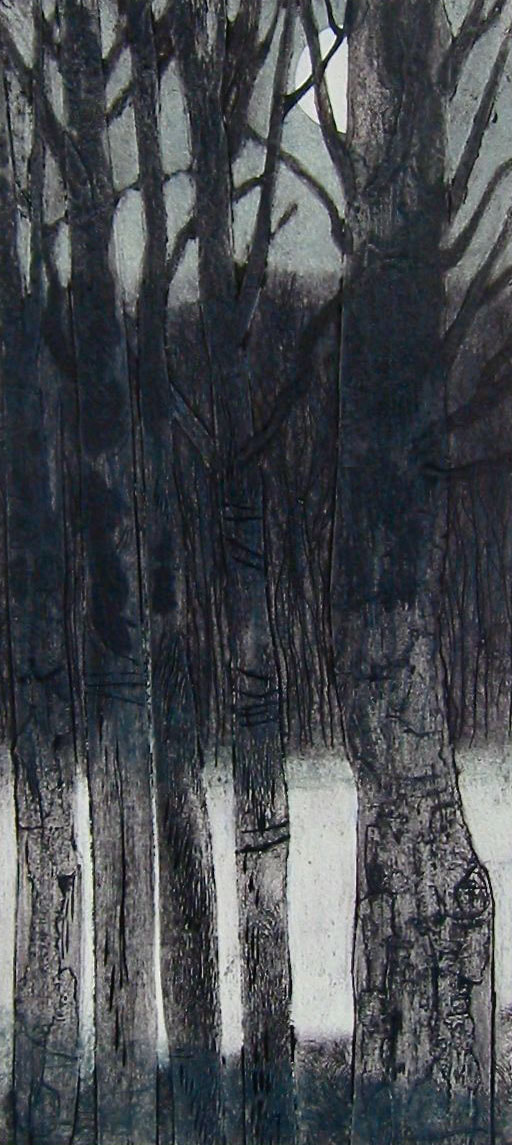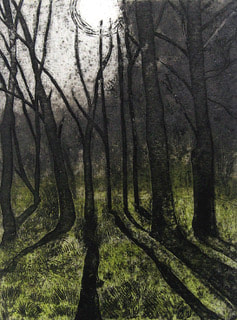everything is illuminated
An exhibition about the power of light in the darkness.
Victoria Brookland
'Both Art and life connect fundamentally with the concept of light and darkness.
The light has no spark for us without it's relationship to the dark:
'Only the dark, dark night shows to my eyes the stars' (Walt Whitman)
Both the brightness of illuminating light and the ebony space of night can provide us with the opportunity for awakening - both creatively and spiritually.I see my work as a continuation of an English Romantic tradition which has always concerned itself with what happens in the shadows, and explores how what we find in the darkness may actually be pointing to a luminosity - to a greater understanding of ourselves and our connection to nature.
The light has no spark for us without it's relationship to the dark:
'Only the dark, dark night shows to my eyes the stars' (Walt Whitman)
Both the brightness of illuminating light and the ebony space of night can provide us with the opportunity for awakening - both creatively and spiritually.I see my work as a continuation of an English Romantic tradition which has always concerned itself with what happens in the shadows, and explores how what we find in the darkness may actually be pointing to a luminosity - to a greater understanding of ourselves and our connection to nature.
Flora Mclachlan
"To make my etchings and lithographs, I draw places and scenes that have an emotional resonance for me and then combine them with images from folklore and legend to bring out the power of the place in the picture.
I love to draw scenes from fairy tales, imaginary places, forest clearings and castles drowned in briars.
I bite heavy time-worn textures into my etching plates using soft ground as a resist, then scrape and burnish the moonshine back in. Then I hang cloudy mists of spit bite aquatint above the hills and amongst the trees.
Landscape and the experience of moving through it, observing and recording it, is what I love, and I am exploring it now using the responsive and expressive drawing techniques possible with stone lithography."
I love to draw scenes from fairy tales, imaginary places, forest clearings and castles drowned in briars.
I bite heavy time-worn textures into my etching plates using soft ground as a resist, then scrape and burnish the moonshine back in. Then I hang cloudy mists of spit bite aquatint above the hills and amongst the trees.
Landscape and the experience of moving through it, observing and recording it, is what I love, and I am exploring it now using the responsive and expressive drawing techniques possible with stone lithography."
Hester Cox
"I work from my home in Horton-in-Ribblesdale and my studio has a view of Penyghent. As a fellrunner, my prints are often inspired by the landscape that I run in and I revisit the same places at different times of the day and year. During the winter months, I will often run in the evenings with a head torch and I love the peace and calm of a starry night. The moon's path on a lake or its shape reflected in a tarn are magical to me. Sometimes the light from the moon is so strong that it casts shadows and I can run without a torch. As I descend the mountain back to the village, the glowing lights from the houses welcome me home".
Frayah humphries
"I work in a process called Cyanotype, it is a form of photographic print making, using the sun to develop the print, and was used to make blue prints. I use a mix of natural objects, often plants or feathers and my own drawings to create the prints. It is a fascinating process and no two prints will ever be the same because there are so many variables in the process of creating the piece.
My inspiration for this exhibition came from walks in the woods near my house. I find whenever I am struggling with a situation or how to approach something or when the creative inspiration just isn't flowing, if I go for a walk in the woods slowly my mind clears and I can start to work out the situation. Everything is illuminated you might say. My work often particularly features birds, many cultures see animals and birds to be signs for change or messages from nature. Something which we may not place a lot of weight on in the modern world but many people still salute a magpie it is still somewhere in our cultures subconscious."
My inspiration for this exhibition came from walks in the woods near my house. I find whenever I am struggling with a situation or how to approach something or when the creative inspiration just isn't flowing, if I go for a walk in the woods slowly my mind clears and I can start to work out the situation. Everything is illuminated you might say. My work often particularly features birds, many cultures see animals and birds to be signs for change or messages from nature. Something which we may not place a lot of weight on in the modern world but many people still salute a magpie it is still somewhere in our cultures subconscious."
Liz Scrine
'Liz Scrine is a ceramic artist based in Manchester. She draws her inspiration from architecture and mythology and her work often includes a story-telling aspect. She is interested in light and shadow and plays with architectural forms which draw the viewer into an imaginary space.
The idea for the lightboxes evolved from a commission Liz did for Bristol Childrens Hospital where she was asked to make a series of miniature theatre sets inspired by typical fairytale motifs such as 'the dark forest' and 'the labyrinth'. These were set into niches in the wall along the main hospital staircase.
Following the success of this project she adapted three of the designs further to create pieces that would be suitable in a domestic setting. She envisages them being either free standing or tucked between books on a bookshelf.'
The idea for the lightboxes evolved from a commission Liz did for Bristol Childrens Hospital where she was asked to make a series of miniature theatre sets inspired by typical fairytale motifs such as 'the dark forest' and 'the labyrinth'. These were set into niches in the wall along the main hospital staircase.
Following the success of this project she adapted three of the designs further to create pieces that would be suitable in a domestic setting. She envisages them being either free standing or tucked between books on a bookshelf.'
Frances Carlile
'Winter is the context for this work. It is the winter light that reveals the bare bones of the landscape. The trees arrange themselves against the low sun of a winter’s day. The light from an old fashioned projector illuminates a dark wood, and a storm is coming.
These prints are all made from a simple idea, the flash of a red fox running through a dark landscape, an icy house frozen on a snowy plain. The images are largely imaginative but are also based on a close response to the natural world.'
These prints are all made from a simple idea, the flash of a red fox running through a dark landscape, an icy house frozen on a snowy plain. The images are largely imaginative but are also based on a close response to the natural world.'
Jack beaumont - the dancingcrow
'Narrative surrounds us, we are a species of storytellers – from our distant days around an open fire to now, as modern makers & craftsmen – our work is the tale, as The Dancingcrow I have always been engaged in the narrative process – narrative creator, word weaver, illustrator through to maker of ‘interesting things’ it is part of my very existence.
I suppose it starts with an eclectic background knowledge of myth & story, listening to tales, painting with words and ideas, digital dexterity & traditional skills rarely taught in books or from a class – these are skills that I have learnt over the 40 years, this is the ‘magic that you learn by listening & experimenting, creating & building, line upon line, meme upon meme – loving your craft!
My personal ethos is that we waste too much, throw away material that has many, useful years ahead of it, if we ignore the stories behind the material, then we lose part of the rich tapestry of existence, and part of ourselves. So look at the work, here you see another incarnation of something that someone thought as useless, let’s prove them wrong!!!!
I want to take the best of the old & of the new - morph them into an art-form that gives animation to stories, so, here you will find 17th century timber decorated with digital illustrations, 24 carat gold leaf wrapping sea worn driftwood, hand worked copper & modern technology - hopefully they blend together nicely – let me know what you think?'
I suppose it starts with an eclectic background knowledge of myth & story, listening to tales, painting with words and ideas, digital dexterity & traditional skills rarely taught in books or from a class – these are skills that I have learnt over the 40 years, this is the ‘magic that you learn by listening & experimenting, creating & building, line upon line, meme upon meme – loving your craft!
My personal ethos is that we waste too much, throw away material that has many, useful years ahead of it, if we ignore the stories behind the material, then we lose part of the rich tapestry of existence, and part of ourselves. So look at the work, here you see another incarnation of something that someone thought as useless, let’s prove them wrong!!!!
I want to take the best of the old & of the new - morph them into an art-form that gives animation to stories, so, here you will find 17th century timber decorated with digital illustrations, 24 carat gold leaf wrapping sea worn driftwood, hand worked copper & modern technology - hopefully they blend together nicely – let me know what you think?'
Anja Percival
'I am fascinated by the different atmospheres that light creates in our environment. I strive to use variations in light to magnify the moods and sensations of places I have experienced. My colour palette is relatively subdued… I feel that strong colour would detract the attention from the subtle tonal variations within my imagery. I frequently focus on spaces that do not include the human figure… because to me, a human presence signifies movement, and this would interfere with the stillness of the composition. My choice of subject matter is usually quite ordinary (e.g. the inside of my own home, or the scenery I pass daily on the way the work) but it’s the effect that light has within these spaces that captures my attention. Infiltrating transient sunshine can suddenly transform a space, filling it with energy and highlighting surface form and texture. I find it really interesting to see light changing the unremarkable to the remarkable, revealing a whole new level of visual stimuli.'
Laney birkhead
'Laney is an artist and beekeeper, whose landscape work depicts her close relationship with the natural environment and her beekeeping. The Moon is a long standing personal symbol in Laney’s work, and she uses the lunar cycles to plan her creative practice – starting new pieces at a new moon and completing ongoing work during the waning phase. This pattern has been followed for several years allowing a knowing of light and shade to develop within the images and the seasons, an living changing shape associated with various life rhythms on the earth. She finds inspiration in the light and phases of the moon, and finds that this stabling influence guides her regularly. A true light in the darkness.
Some of the pictures selected for the ‘Everything is Illuminated’ exhibition at Masham Gallery are part of a developing project using the ancient English and Celtic names for monthly moons recording personal observations of her local landscape throughout the year.
Her observational sketches are developed into etchings, collagraphs, carborundum and relief prints, she enjoys combining several printmaking methods together to produce original prints. These selected prints are mainly collagraphs on board with carborundum textures and veneers to deepen the layered effects. Each edition is variable, and each print unique due to the hand crafted nature of each piece.'
Some of the pictures selected for the ‘Everything is Illuminated’ exhibition at Masham Gallery are part of a developing project using the ancient English and Celtic names for monthly moons recording personal observations of her local landscape throughout the year.
Her observational sketches are developed into etchings, collagraphs, carborundum and relief prints, she enjoys combining several printmaking methods together to produce original prints. These selected prints are mainly collagraphs on board with carborundum textures and veneers to deepen the layered effects. Each edition is variable, and each print unique due to the hand crafted nature of each piece.'

